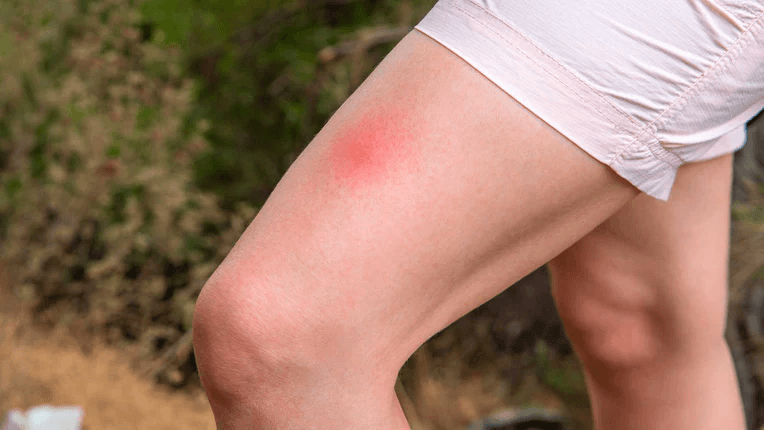Expert advice from OneMedicine Private GP Clinic

As the seasons shift, so does nature. More time outside means more exposure to insects — and a higher chance of bites and stings.
Most are harmless. Some aren’t. Here’s how to spot the difference.
The Season Matters
Spring and summer bring longer days — and more insect activity. As temperatures rise, insects such as bees, wasps, mosquitoes, midges, horseflies, and ticks become increasingly common. These are peak months for insect bites and stings, especially in gardens, parks, and wooded areas.
Whether you’re out for a walk, enjoying a picnic, or just spending time in your garden, the risk of being bitten or stung increases. Understanding when and where insects are most active can help you stay protected and avoid common seasonal skin irritations.
Risk Factors
Certain conditions make insect bites and stings more likely. You’re at higher risk if you spend time outdoors, particularly in grassy or wooded areas. Wearing short sleeves, sandals, or loose clothing gives insects easier access to skin.
Strong fragrances such as scented lotions, deodorants, and perfumes can attract insects. Outdoor food and drink — especially sweet items — also increase the chance of being stung. If you’ve experienced allergic reactions in the past, it’s important to remain cautious and know the early warning signs.
What You’ll See: Common Symptoms of Insect Bites
Most insect bites and stings are mild. You may notice:
- A small red bump
- Swelling or itching
- Localised pain or tenderness
- A blister or mild rash
Tick bites may go unnoticed at first but can develop into a circular or “bullseye” rash after a few days — a potential sign of Lyme disease.
Red Flags: When to Seek Medical Help
While most insect bites are harmless, some symptoms require urgent care. Seek medical attention if you experience: ✔ Swelling of the lips, face, or tongue
✔ Difficulty breathing or swallowing
✔ Dizziness or fainting
✔ Redness spreading rapidly, or signs of pus
✔ Fever or flu-like symptoms after a bite
✔ A bullseye-shaped rash after a tick bite
These may indicate a severe allergic reaction, local infection, or vector-borne illness such as Lyme disease.
Simple Treatment for Insect Bites and Stings
For minor bites and stings, treatment at home is usually effective:
- Clean the area gently with soap and water
- Apply a cold pack to reduce swelling
- Take a non-drowsy antihistamine for itching
- Use hydrocortisone cream to soothe the skin
- Take paracetamol or ibuprofen if needed for pain
If you’ve been bitten by a tick, remove it carefully using fine tweezers. Grip as close to the skin as possible and pull straight out. Avoid twisting.
How to Prevent Insect Bites and Stings
✔ Wear long sleeves and trousers in grassy or wooded areas
✔ Use insect repellent containing DEET or picaridin
✔ Avoid using heavily scented products outdoors
✔ Cover food and sugary drinks when eating outside
✔ Check your skin — and your pets — for ticks after walks
✔ Install insect screens to protect your indoor spaces
Peace of Mind from OneMedicine Private GP Clinic
Knowing the difference between a mild bite and a medical concern can be reassuring — and potentially life-saving. If you’re unsure or experiencing symptoms that don’t settle, our team at OneMedicine Private GP Clinic is here to help.
We offer same-day GP appointments, expert assessment, and tailored treatment plans — in clinic or at home.
Stay safe. Stay informed. Feel better, faster.






